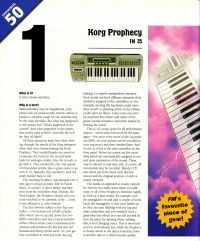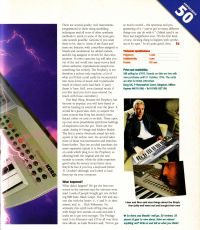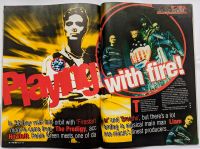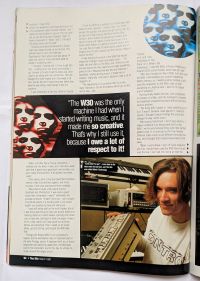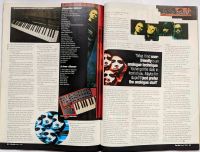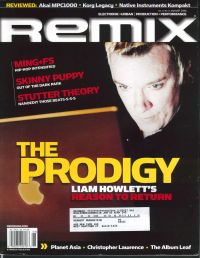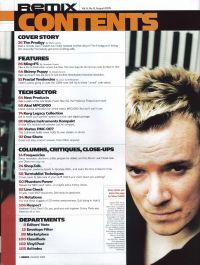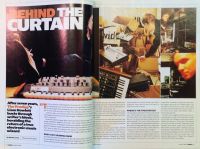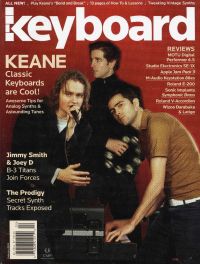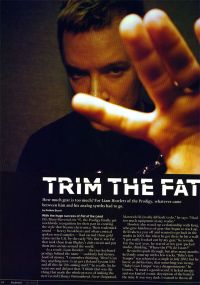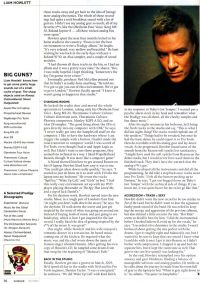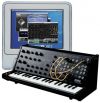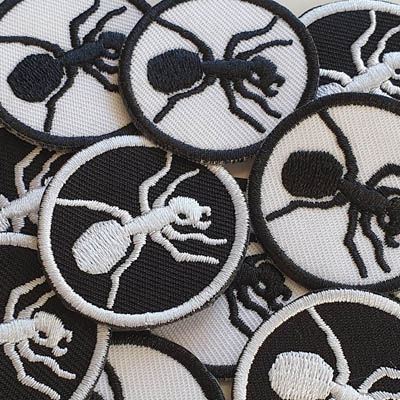Equipment
Liam Howlett’s synths and gear in studio and live.
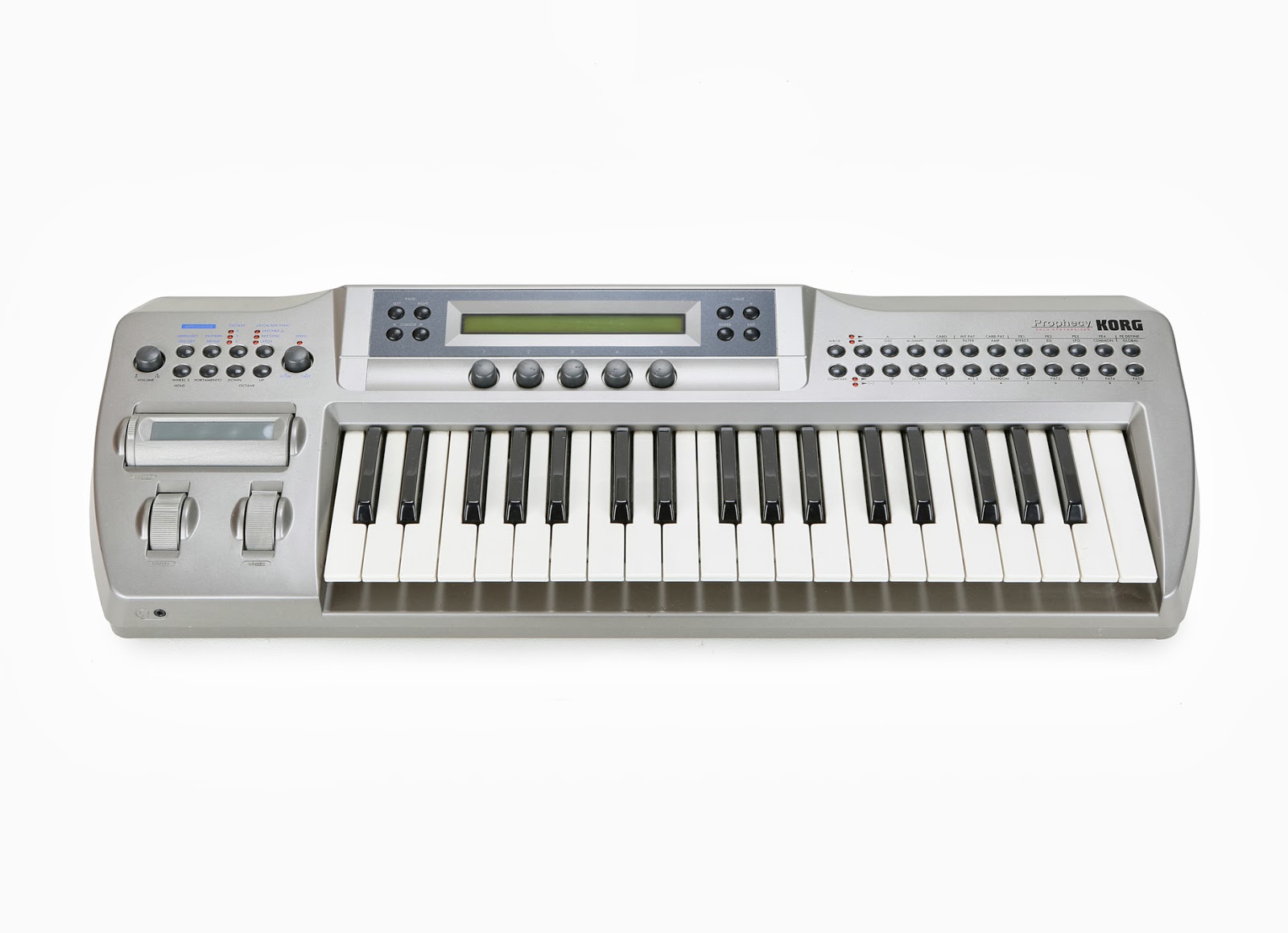
Korg Prophecy Synthesizer
In 1995 introduced Korg Prophecy is considered one of the earliest (mid-nineties) "virtual analog" (a.k.a. VA) synthesizers, although its synthesis capabilities went beyond many of its VA contemporaries.
Along with the Korg Z1, the Korg Prophecy is a direct descendant of the ill-fated OASYS project. It was a small three-octave monosynth, a pioneer of the late 1990s "return-to-analog" trend. Offering assignable knobs, a "log controller" (a mix-up of a modulation wheel and ribbon controller assembled like a "sausage") and many other control sources, it invited players to tweak and shape the sound both easily and quickly. Deep editing, however, wasn't as straightforward, because the sound engine contained no less than 13 DSP-modeled oscillator types, each one offering a large number of parameters to adjust. Some of the most used DSP models were the analog model (based on the classic osc+filter+amp scheme, although with many powerful enhancements), the VPM model (a form of FM synthesis which avoided Yamaha's FM patent) and the "physical modeling" algorithms. The latter deserves special mention. In the mid to late 1990s, it was believed that digital "physical modeling", which recreated the sound of acoustic instruments (brass, strings, woodwinds, etc.) using DSP algorithms instead of samples, would eventually replace sample-based synthesis of those instruments, because of its unprecedented realism and expressiveness. As time passed, physical modeling seemed to lose its appeal to both manufacturers (because of the cost of investigation and implementation) and final users, who complained about the realism of the models and limited polyphony. Also, more complex playing techniques were required to play the models in a convincing way. Nevertheless, the Prophecy's low cost and broad implementation of sound generation techniques earned it a significant place in synthesizer history.
Technically, the Prophecy offered one-note monophony, several effects (including distortion, wave shaping, delay/reverb and chorus/flanger), and 128 memory locations for user sound programs. No sequencer was included, but its integrated arpeggiator was a source of "instant gratification", as some magazines put it. A PCMCIA slot allowed for offline storage of patches and banks. Standard MIDI sockets, a special socket for connecting an EC5 pedal bank, a sustain pedal socket, and a pair of audio outputs occupied the rear panel.
Korg made a major breakthrough at the time, offering a low cost expansion card for Trinity users, which incorporated the whole sound engine of the Prophecy into the already powerful workstation. Gone was the arpeggiator and some minor features, but the editing was much improved through the Trinity's big touchscreen, and the workstation's effects processing was a huge improvement over the Prophecy's basic set.
A direct descendant of the Prophecy is the Korg Z1 (1997) which is the equivalent of a 12-note polyphonic Prophecy with enhanced models, more physical control, 61-note keyboard, bigger screen, 6-part multitimbrality, more presets and two powerful programmable twin arpeggiators.
Used:
This baby was used mostly in live shows between 1995-2005 before Liam totally broke it! We can also hear a preset (Space Adventure) in Firestarter.
Liam also reportedly used a Korg Prophecy for distorted TB-303ish main acid synth lead in Smack My Bitch Up.
Between 96-98 Korg Prophecy was the synth responsible for many of the crazy live noises you could have heard during the live show. Actually this synth was travelling with Liam many many years. It was last seen in 2005 shows. Many people thought that Liam loves this keyboard (including me), But if you check these two different comments below.. you can think twice.. anyway it's really hard to know what Liam really thinks about it but it is well known that this synth was heavily used when the Fat of the Land album was made. I can't say which one of the interviews is made first, but maybe he is just in bad mood when the second interview is made.
Liam's comment:
"The Prophecy is one of the few things that produces big distortion as far as a ready-to-run synth goes. It's at its best on stage, though I've used it on just about every track on the new album so far. The programming is so open, it's great for resonant sweeps, and the ribbon is quite handy. You can also record filter changes over MIDI onto the Mac. There are so many different things you can do with it. It's not the type of keyboard I'd go to to start a song with -- it's better for distortion and feedback sounds. It's a shame it's only monophonic -- it's got some good string sounds. " (Sound On Sound septemper 1996)And like usual he has changed his mind in another interview some years after...
"It`s Absolute Crap" He says this because it has only three good sounds on it and it is too expensive (even though he got it free). He says that if you buy a £900 pounds keyboard then you would expect to turn it on and play chords on it and possibly switch it to solo mode. You don`t expect it to be stuck in solo! What's the point in having a good string sound if you can't play chords with it.
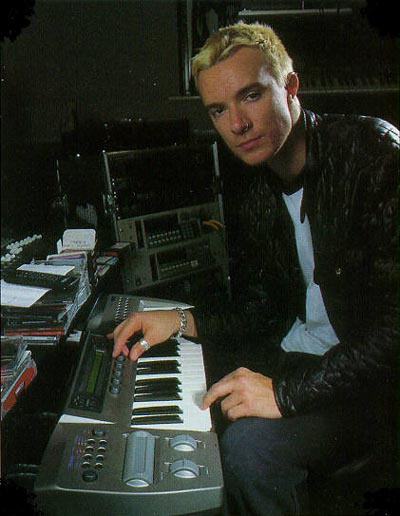
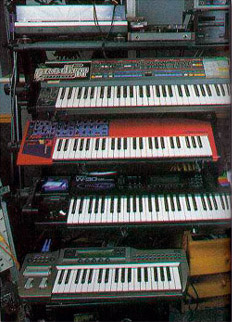
Korg related articles
01 Oct 1996 Sound On Sound
Liam Howlett • The Prodigy & Firestarter
01 Nov 1996 Future Music
Favourite 50 - 1 Korg Prophecy
01 Mar 1997 The Mix
Playing with fire!
01 Dec 2001 Korg magazine
Liam Howlett interviewed by Korg mag in winter 2001
15 Dec 2003 Propellerhead Software
The Prodigal Reasoner
19 Jul 2004 Sonic State
Prodigy Dig The Mackie Sound
01 Aug 2004 Remix
Behind the Curtain
01 Oct 2004 Sound On Sound
Liam Howlett: Recording Always Outnumbered, Never Outgunned
29 Nov 2004 Korg magazine
Never Outgunned: Liam Howlett
01 Feb 2005 Keyboard Magazine
Trim the Fat
19 Nov 2005 Nekozine
Interview with Liam Howlett after The Prodigy's show in Copenhagen
01 Oct 2010 Sound On Sound
Jon Burton: Mixing & Recording The Prodigy Live
18 May 2015 MusicTech magazine
Landmark Productions: The Prodigy – The Fat of the Land
If you know something else about this piece of gear, please mail to me or contact me via feedback form.
